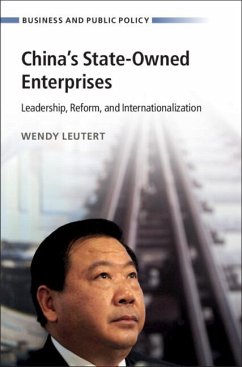
Brazil's State-Owned Enterprises
A Case Study of the State as Entrepreneur
Herausgeber: Knight, Alan

PAYBACK Punkte
75 °P sammeln!
This book provides the first systematic analysis of the performance of Brazil's large state-owned enterprises. The Brazilian economic system encourages private enterprise, but the government itself owns and operates such critical industries as petrochemicals, steel, electricity, and telecommunications. The Brazilian state has assumed the role of an entrepreneur not for ideological reasons, but as a pragmatic means of speeding up the process of economic growth. Though relatively few in number, the state-owned enterprises have grown rapidly in size and scale of operations relative to private fir...
This book provides the first systematic analysis of the performance of Brazil's large state-owned enterprises. The Brazilian economic system encourages private enterprise, but the government itself owns and operates such critical industries as petrochemicals, steel, electricity, and telecommunications. The Brazilian state has assumed the role of an entrepreneur not for ideological reasons, but as a pragmatic means of speeding up the process of economic growth. Though relatively few in number, the state-owned enterprises have grown rapidly in size and scale of operations relative to private firms. The author examines the economic and financial performance of these state-owned enterprises in terms of their contribution to economic growth. He concludes that in Brazil they have been effective substitutes for private investment in a number of strategic industries and that their ability to assemble large amounts of capital, to attract skilled managers, and to earn reasonable profits permitted the Brazilian economy to grow more rapidly during the 1960s and 1970s than would have been the case in their absence. Why the Brazilian state-owned enterprises seem to have performed better than many of their counterparts in other developing countries is a question that will interest development specialists all over the world. Trebat argues that much of the performance is due to the size and dynamism of the Brazilian economy, which allowed these capital-intensive enterprises to realize economies of large-scale production not achievable in smaller countries. But the Brazilian government's policies toward its state-owned enterprises have also been important in avoiding poor performance. The results of these policies provide useful lessons for the supervision and control of state-owned enterprises in other developing countries. Trebat concludes that just a satisfactory state-owned enterprise performance permitted rapid growth in Brazil during the 1960s and 1970s, so would public enterprise performance in the 1980s be a crucial determinant of how well and how quickly Brazil surmounted its current economic crisis.
Table of contents:
List of tables and figures; Preface; 1. Introduction; 2. The economic role of the state; 3. Origins of public enterprise in Brazil; 4. The control of public enterprise in Brazil; 5. Relationships with economic growth; 6. Sources of growth and rates of return; 7. Policies on pricing; 8. The financing of public enterprise investment; 9. Conclusions; Appendixes; Notes; Selected bibliography; Index.
Table of contents:
List of tables and figures; Preface; 1. Introduction; 2. The economic role of the state; 3. Origins of public enterprise in Brazil; 4. The control of public enterprise in Brazil; 5. Relationships with economic growth; 6. Sources of growth and rates of return; 7. Policies on pricing; 8. The financing of public enterprise investment; 9. Conclusions; Appendixes; Notes; Selected bibliography; Index.














